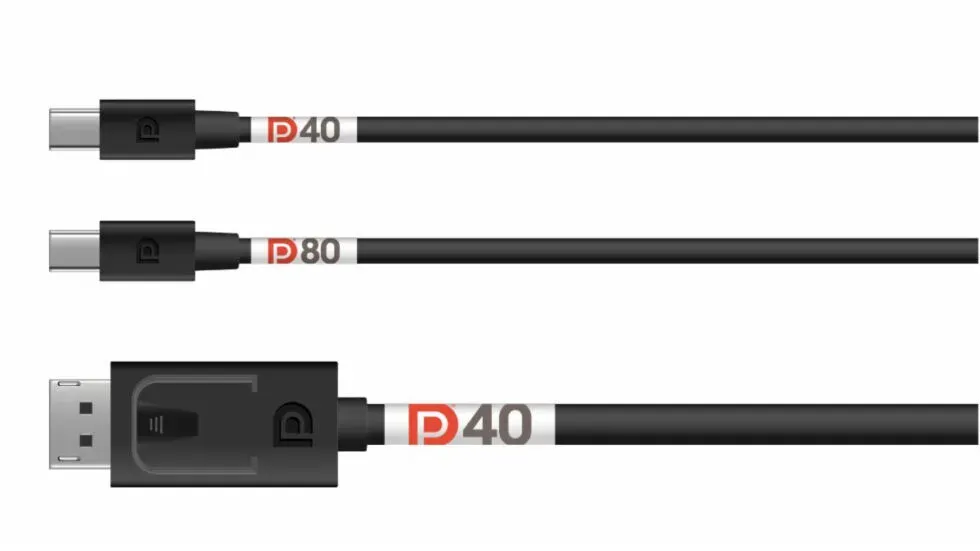VESA released the DisplayPort 2.1 specification today. Typically, when an industry group announces a new standard, it will be months or even years before products that support that specification become available to consumers. But DisplayPort 2.1 products are already available today; in fact, you may already have some of them. With the click of its magic wand, VESA also announced today that any product that was already certified for DisplayPort 2.0 prior to today’s announcement is now also certified for DisplayPort 2.1.
“VESA is working closely with member companies to ensure that DisplayPort 2.0-enabled products truly comply with the newer and more demanding DisplayPort 2.1 specification,”VESA, which also deals with DisplayHDR, AdaptiveSync/MediaSync, Clear MR and monitor mount. specifications, said.
“Thanks to these efforts, all previously certified DisplayPort 2.0 products, including products that support UHBR (Ultra High Data Rate), whether they are GPUs, docking station chips, scalar monitor chips, PHY repeater chips such as re-timers, or DP40 cables /DP80. (including both passive and active, and those using full-size DisplayPort, Mini DisplayPort, or USB Type-C connectors) are already certified to the more stringent DisplayPort 2.1 specification.”
Similarly, DisplayPort 2.0 products have been ticked off. However, there aren’t many DisplayPort 2.0 products to speak of right now. DisplayPort 2.0 products were originally expected in 2019, but due to the COVID-19 pandemic crippling testing capabilities, they didn’t become available until this year.
The AMD Ryzen 6000 is DisplayPort 2.0 certified, as are some MediaTek and RealTek chipsets, DisplayPort cables and docking stations, but that’s about it. We are not aware of any DisplayPort 2.0 monitors that could be purchased in the US. Intel Arc graphics cards, including the Intel Arc A770 and A750, support DisplayPort 2.0, but the latest Nvidia GPUs, the RTX 4090 and 4080, and the latest AMD cards, the Radeon RX 6000 series, do not.
DisplayPort 2.1 vs. DisplayPort 2.0
This brings us to the obvious question: what is the difference between DisplayPort 2.0 and DisplayPort 2.1?
The new DisplayPort 2.1 confirms the use of the same physical layer (PHY) specification as USB4. According to VESA, this change will result in more efficient DisplayPort tunneling compared to the latest generation of USB-C. As USB-C becomes more common, it makes sense for DisplayPort to pair well with the connector.
“Achieving greater consistency between DisplayPort and USB on a common PHY has been a particularly important effort within VESA, given the significant overlap in use case models between the DisplayPort and USB4 ecosystems,” said Alan Kobayashi, VESA Chairman and Chairman of the DisplayPort Working Group. statement.
In addition, DisplayPort 2.1 offers an updated bandwidth management feature that VESA claims will allow DisplayPort over USB4 tunneling to coexist with other I/O traffic “more efficiently”than before.
The next version of DisplayPort also requires support for the VESA Display Stream Compression (DSC) codec and Panel Replay to reduce the bandwidth required to transmit DisplayPort tunnel packets.

Finally, the DisplayPort 2.1 specification places more stringent requirements on DisplayPort cables, including Mini cables. DisplayPort 2.1 cables operating at speeds up to 40Gbps, which VESA calls DP40 cables, support “more than 2m”(6.6ft) while maintaining performance.
Meanwhile, DisplayPort 2.1 cables, operating at a maximum bandwidth of 80Gbps, are rated to operate at full performance over distances “greater than 1m,”VESA announced today.
As many have probably noticed, DisplayPort 2.1 does not increase the maximum bandwidth over DisplayPort 2.0 and does not provide more advanced features such as maximum resolution and refresh rate. VESA has discussed the use of DisplayPort 2.0 with monitors up to 16K (15,360 × 8,640 pixels), including 60Hz with HDR and DSC. DisplayPort 2.0 is also associated with fast, high resolution displays such as 4K, 240Hz monitors that don’t rely on compression.


